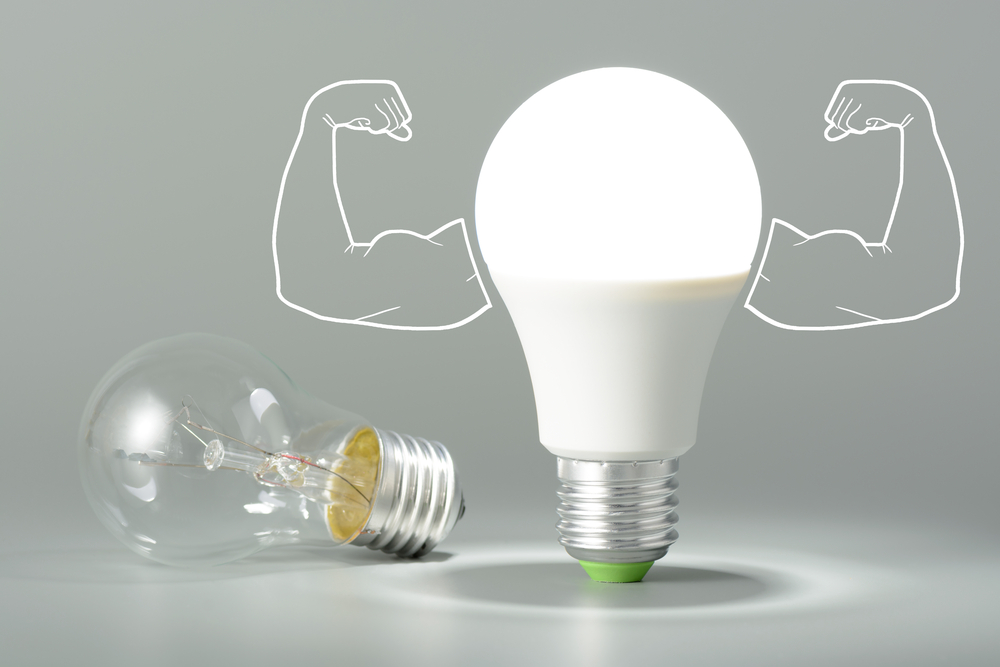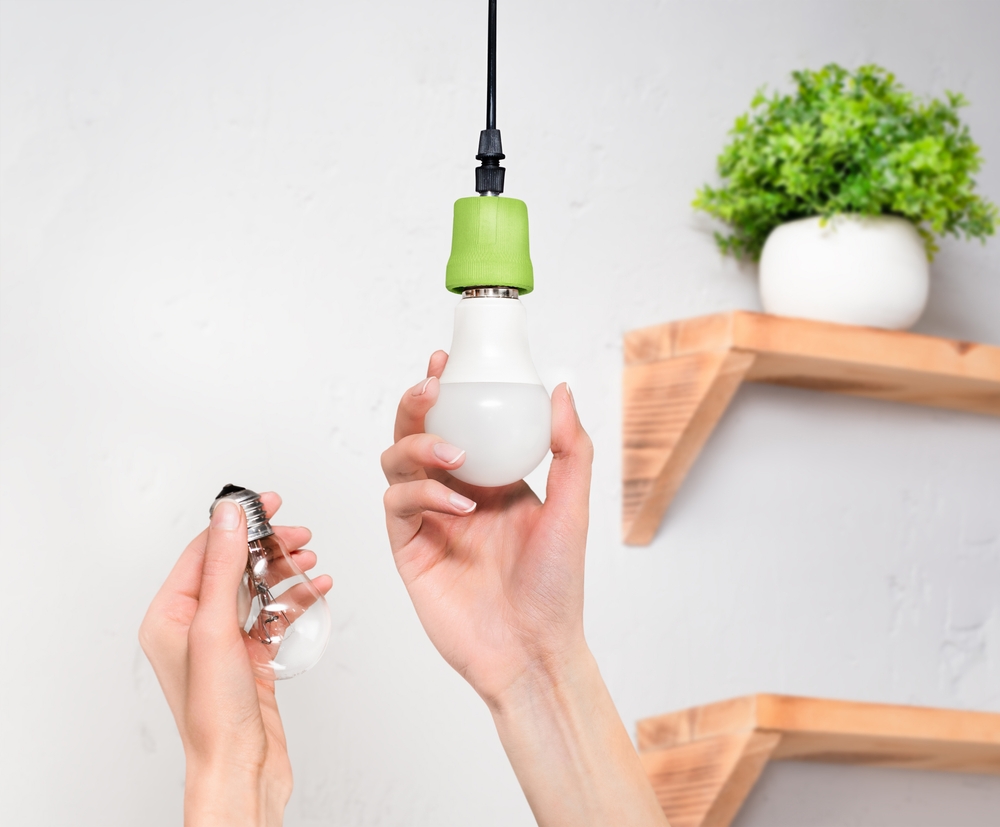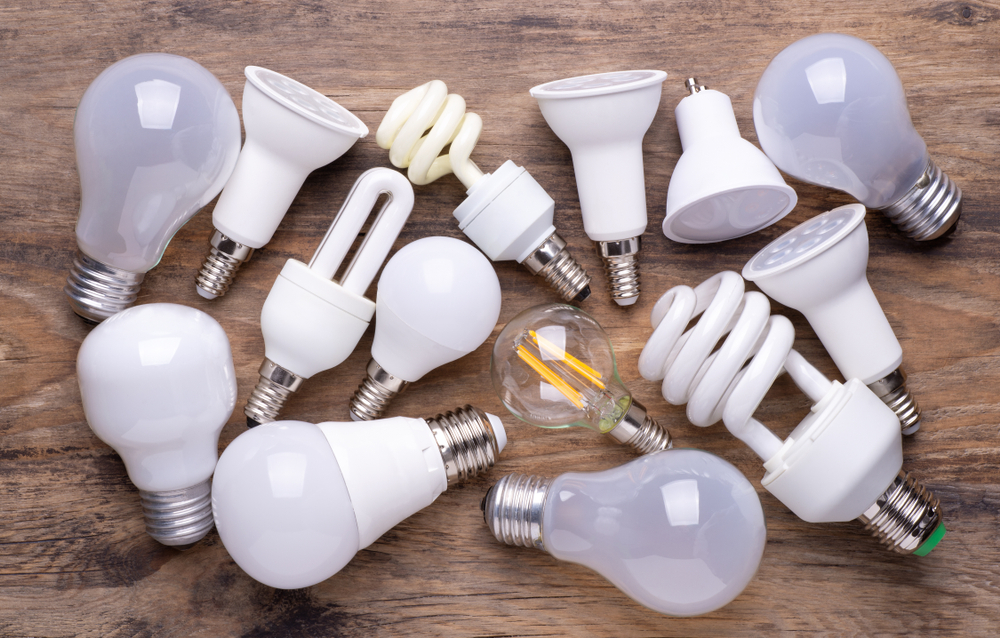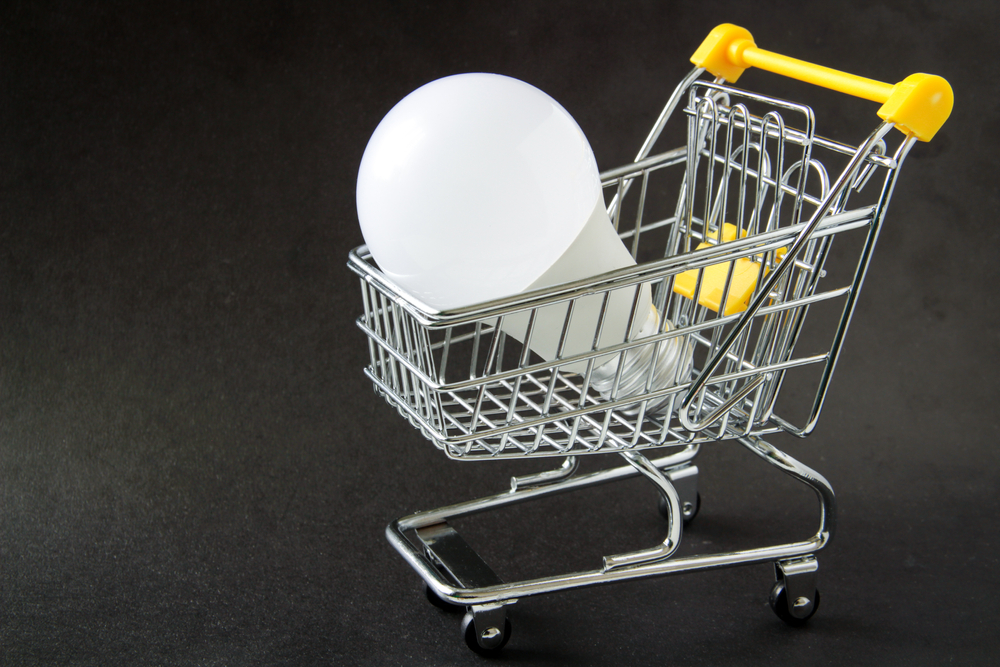Looking to cut down on your electricity bills and do your bit for the planet? It might surprise you to learn that lighting is responsible for a significant chunk of global electricity use – about 15%, in fact. It also contributes to 5% of the world’s greenhouse gas emissions. Making the switch to energy efficient lighting is a smart and effective way to not only lower your energy costs but also reduce your environmental impact. It’s a simple change with big benefits, both for your wallet and the world around us.
The Evolution of Lighting Technology

From the incandescent bulb of Thomas Edison to today’s smart LEDs, lighting technology has undergone a transformative journey. The shift from energy-hungry incandescent bulbs to energy-efficient alternatives marks a significant milestone in this evolution. Technological advancements have paved the way for more sustainable options, like LED (Light Emitting Diode), CFL (Compact Fluorescent Lamp), and modern fluorescent lamps, drastically reducing energy consumption without compromising on light quality.
What is Energy Efficient Lighting?
Energy-efficient lighting refers to solutions that provide higher quality light while consuming less energy compared to traditional lighting. These technologies last longer, reduce electricity usage, and subsequently lower utility bills and environmental impact.
Why Switch to Energy-Efficient Lighting?

Energy-efficient lighting not only reduces your electricity bill but also lessens your environmental impact. With lighting accounting for a significant portion of home energy use, making the switch can lead to substantial savings.
The Environmental and Economic Impact
Lower Energy Bills: Energy-efficient bulbs consume less power, translating to lower utility costs.
Reduced Carbon Footprint: By using less electricity, these bulbs decrease greenhouse gas emissions.
Longer Lifespan: Lasting longer than traditional bulbs, they reduce waste and replacement costs.
What Makes a Bulb Energy-Efficient?
Energy-efficient light bulbs, like LEDs and CFLs, use less electricity to produce the same amount of light as traditional bulbs. They convert more energy into light, not heat, making them more efficient and cost-effective.
Understanding Efficiency: A Closer Look at Energy-Efficient Lighting Options

When we talk about energy-efficient lighting, it’s not just about LEDs and CFLs. There’s a whole world of options out there! Let’s dive into these diverse choices and see what makes each of them special in their energy-saving capabilities.
LEDs (Light Emitting Diodes)
- Efficiency: Use up to 90% less energy than incandescent bulbs.
- Characteristics: Long lifespan, high luminosity, and available in various color temperatures.
- Applications: Suitable for both general and task lighting in homes, offices, and outdoor areas.
CFLs (Compact Fluorescent Lamps)
- Efficiency: Use about 70% less energy than incandescent bulbs.
- Characteristics: May take a moment to reach full brightness, contain a very small amount of mercury.
- Applications: Best for areas where lights are on for longer periods, like living rooms or offices.
Halogen Light Bulbs
- Efficiency: About 25-30% more efficient than traditional incandescent bulbs.
- Characteristics: A variant of the standard incandescent bulb with a small amount of halogen gas, which increases efficiency.
- Applications: Often used for flood, spot, and task lighting.
High-Intensity Discharge (HID) Lamps
- Efficiency: More efficient than traditional incandescent and halogen lamps.
- Characteristics: Produces a large amount of light, long-lasting, but takes time to warm up.
- Applications: Commonly used in industrial, outdoor, and street lighting.
Light Emitting Plasma (LEP)
- Efficiency: Comparable to LEDs in terms of energy consumption.
- Characteristics: Offers a very high quality of light, long lifespan.
- Applications: Used in situations requiring high-intensity lighting such as streetlights, high bay lighting, and agricultural grow lights.
Organic LEDs (OLEDs)
- Efficiency: Emerging technology, potentially more efficient than traditional LEDs.
- Characteristics: Thin, flexible sheets of organic electroluminescent material.
- Applications: Innovative uses in displays and potential for unique, flexible lighting designs.
Each of these energy saving light bulbs offer distinct advantages and efficiencies, making them suitable for a variety of applications. LEDs and CFLs are widely used for general purposes, while others like HID and LEP are more specialized but still contribute to the energy-efficient lighting landscape.
Can Energy-Efficient Lights Save Me Money?
Absolutely! Making the switch to more energy-efficient lighting options like LEDs, CFLs, or even advanced technologies like OLEDs can lead to substantial reductions in your energy bills. While some of these options have a higher upfront cost compared to traditional bulbs, the long-term savings through reduced energy usage and extended lifespans are significant.
Comprehensive Cost-Benefit Analysis
| Bulb Type | Initial Cost | Average Lifespan | Energy Usage |
| Incandescent | Low | Short | High |
| LED | Higher | Long | Very Low |
| CFL | Moderate | Medium | Low |
| Halogen Incandescent | Moderate | Longer than Incandescent | Lower than Incandescent |
| HID (High-Intensity Discharge) | Higher | Very Long | Moderate |
| LEP (Light Emitting Plasma) | Higher | Very Long | Low |
| OLED (Organic LEDs) | Higher (Emerging Technology) | Long | Low to Moderate |
How Do I Choose the Right Energy-Efficient Bulbs?

Selecting the right energy-efficient bulbs for your space involves more than just picking up the first LED or CFL you see on the shelf. It’s about understanding your needs and matching them with the right bulb characteristics. Let’s break down what you need to consider:
Brightness: Lumens Over Watts
- Lumens, Not Watts: Remember, brightness is measured in lumens, not watts. More lumens mean a brighter light, fewer lumens mean a dimmer light.
- Wattage Equivalence: Check the ‘wattage equivalent’ on LED and CFL bulbs to replace incandescent bulbs of similar brightness effectively.
Color Temperature: Setting the Right Mood
- Warm to Cool Spectrum: Color temperature is measured in Kelvins. Lower Kelvin numbers mean warmer, yellowish light, while higher numbers mean cooler, bluish light.
- Room Ambiance: Choose warmer lights for cozy, relaxed spaces like living rooms and bedrooms, and cooler lights for task-oriented spaces like home offices and kitchens.
Room Use: Tailoring to Function and Ambiance
- Functionality First: Consider the primary use of the room. Is it for relaxation, work, or entertainment?
- Accent and Task Lighting: In areas needing focus, like reading nooks or kitchen counters, opt for brighter, more focused lights.
- Ambient Lighting: For general lighting, choose bulbs that evenly illuminate the entire room without being too harsh.
Additional Considerations: Beyond Basics
- Dimmability: Not all energy-efficient bulbs are dimmable. Check the packaging if you need this feature.
- Smart Features: Consider smart bulbs for enhanced control and energy-saving features like motion sensors and programmable timers.
- Fixture Fit: Ensure the bulb shape and base are compatible with your existing fixtures.
- Quality Marks: Look for certifications for assurance of energy efficiency and performance.
What Should I Know Before Switching?

Making the switch to energy-efficient lighting involves more than just choosing the right bulb. It’s about ensuring a seamless transition that maximizes both efficiency and functionality. Here’s an expanded checklist to consider before making the switch:
Pre-Switch Checklist
- Compatibility with Existing Fixtures:
- Ensure the bulb base matches your current fixtures.
- Check for any size or weight constraints, especially for enclosed or recessed fixtures.
- Dimmable Capabilities:
- If your current setup includes dimmer switches, verify that your new bulbs are compatible.
- Consider upgrading to smart dimmers for enhanced control with energy-efficient bulbs.
- Motion Sensor Integration:
- Ideal for outdoor and security lighting.
- Check compatibility with existing outdoor fixtures and security systems.
- Color Temperature Suitability:
- Match the color temperature to the intended ambiance and function of each room.
- Energy Star Certification:
- Look for the ENERGY STAR label for high efficiency and quality assurance.
- Smart Technology Compatibility:
- For smart home enthusiasts, ensure the bulbs can integrate with your existing smart home system.
- Explore smart lighting options with features like app control, scheduling, and voice command capabilities.
- Lifespan and Warranty:
- Check the expected lifespan of the bulbs and the warranty provided.
- Longer lifespans mean fewer replacements and greater savings over time.
- Environmental Impact and Disposal:
- Understand the environmental footprint of the bulbs, especially for disposal.
- CFLs require special disposal due to mercury content.
- Cost vs. Benefit Analysis:
- Consider the initial cost against long-term savings on energy bills.
- Calculate the payback period to understand when you’ll start saving.
- Light Distribution and Beam Angle:
- Ensure the bulb provides adequate light spread for the area.
- Consider beam angle for focused lighting needs, like task lighting or accent lighting.
Starting small, like replacing a single bulb, can lead to bigger changes in your home’s energy efficiency. Embrace energy-efficient lighting for a brighter, more sustainable future.
In the Dallas-Fort Worth, TX area? Contact Smart Space Automation Company for professional energy-efficient lighting installation and maintenance services today.

